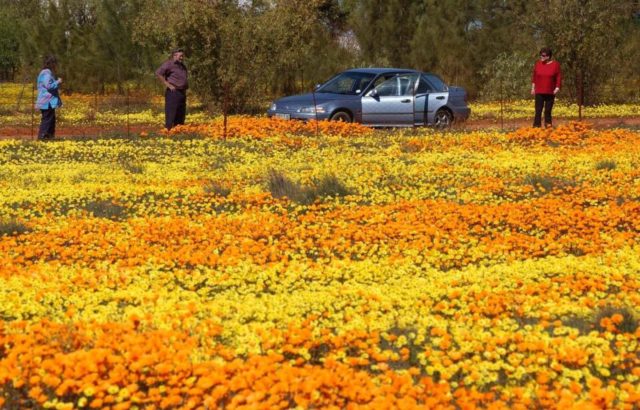Running until the the end of October, the SANBI Spring Festival has been launched to showcase and draw visitors to the network of exceptional National Botanical and Zoological Gardens that exist across the country
THE FIRST-ever national Spring Festival has been launched by the South African National Biodiversity Institute (SANBI) and residents of Nieuwoudtville and the surrounding Northern Cape area have been urged to join in the festivity at the Hantam National Botanical Garden.
“The festival is great news for gardeners, fans of all things floral, nature lovers, outdoor enthusiasts, families looking for a wonderful day out, and everyone celebrating the arrival of warmer weather,” SANBI spokesperson Catherine Pate said yesterday.
“Running until the end of October, the SANBI Spring Festival has been launched to showcase and draw visitors to the network of exceptional National Botanical and Zoological Gardens that exist across the country, and which are managed by SANBI.
She pointed out that the Hantam National Botanical Garden formed part of the north-western border of the Cape Floristic Region. “Comprising 6 200 hectares and lying about 730 metres above sea level, it serves as a centre for biodiversity research in the Bokkeveld Plateau and Succulent Karoo region.”
More than 1 350 plant species have been recorded on the Bokkeveld Plateau, including 80 endemic species (6% of the flora). Almost a third of the species endemic to the Bokkeveld Plateau are threatened with extinction. Many of them are found, and preserved, in the Hantam Botanical Garden.”
More than 150 bird species have also been recorded in the garden, including the secretary bird, the threatened blue crane, the rare and endangered black harrier and the Ludwig’s bustard. Mammals that occur here include the Cape porcupine, the bat-eared fox and the steenbok.
“While walking along the Butterfly Trail, visitors are urged to keep their eyes open for the McGregor’s blue butterfly.”
For those who don’t want to walk the guided tour in the Hantam, a safari vehicle is also on offer. “There are also cycling routes while the green lawns, with its trees and picnic tables outside the beautiful old sandstone office building, is a lovely place to relax and enjoy a picnic while surrounded by views of tranquil, open spaces, dolerite koppies in the distance and the beautiful sound of blue cranes riding the thermals.”
The farm on which the Hantam National Botanical Garden is situated was originally named Glenlyon and in 1960 started offering flower tours on the farm. The tours rapidly became very popular and a 45-seater bus, pulled by one of the farm tractors, was purchased.
Because of the rarity of the species found at the Hantam National Botanical Garden, the BBC Natural History Unit approached the owners of the farm in 1991 to film a documentary there during the rainy season, and in January 1994 Sir David Attenborough returned with the team again to photograph the area during the dry season. The Director of Kew Gardens visited the farm on two occasions. Glenlyon was sold to SANBI in 2007 and became the ninth National Botanical Garden.








